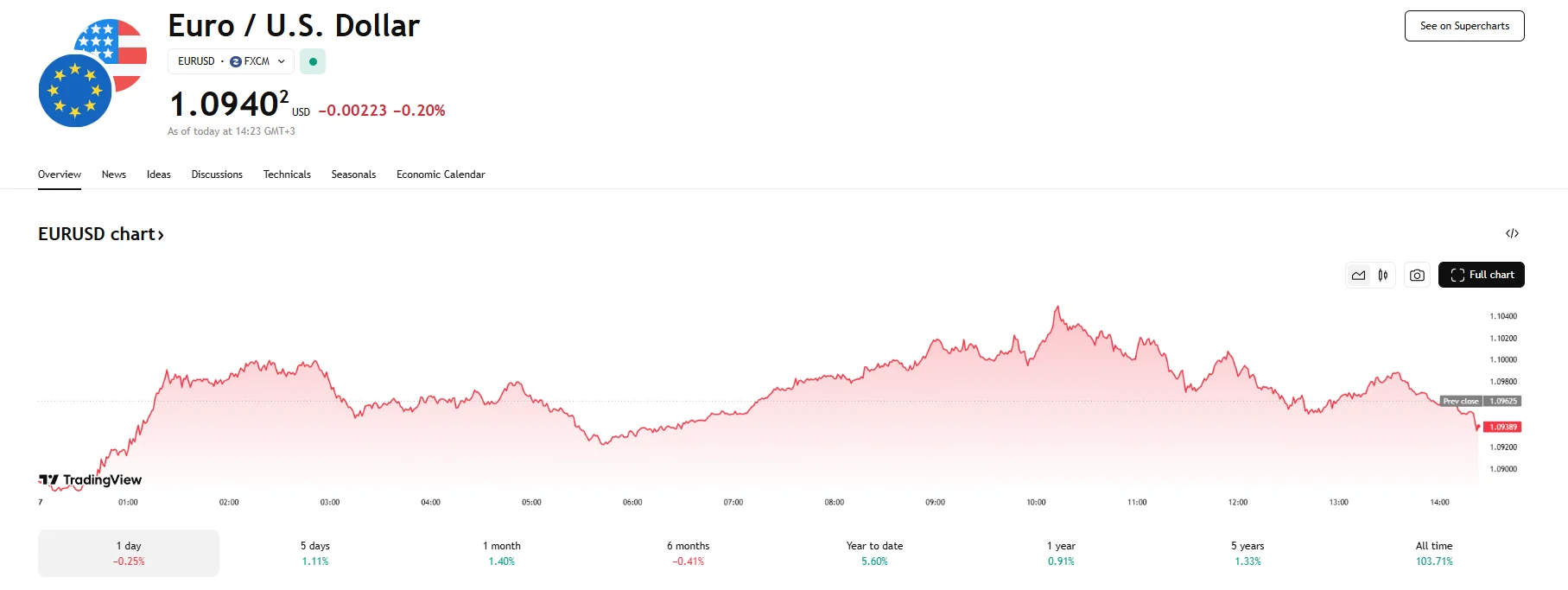Key moments
- The EUR/USD has been trading between 1.0900 and 1.1000 on Monday.
- Federal Reserve Chair Jerome Powell has publicly admitted that the Trump administration’s recent trade actions have a negative effect on the US economy’s expansion prospects.
- As predicted by JP Morgan analysts, US GDP growth could slow by 0.3% this year.
Tariff Worries Weight on Dollar, EUR/USD Stays Close to 1.1000
The exchange rate between the Euro and the US Dollar demonstrated a degree of stability on Monday, hovering in the vicinity of the 1.1000 level. Despite recent fluctuations that saw it retreat from a high of 1.1140, the Euro has maintained its appeal, partly due to its status as a highly liquid alternative to the US Dollar. This resilience occurs against a backdrop of considerable turbulence in global trade and financial markets.

The US dollar’s decline can be attributed to growing concerns surrounding the potential repercussions of the United States’ recently announced tariff policies on the domestic economy. JP Morgan analysts’ forecasts suggest that the American economy could experience a reduction of 0.3% in its GDP growth by the end of 2025. This pessimistic outlook stems from the anticipation that domestic importers will be most affected by President Trump’s import tariffs, thereby dampening economic activity.
Adding to these concerns, Federal Reserve Chair Jerome Powell has acknowledged that the administration’s latest trade measures could bolster inflation and decelerate economic growth. Powell has maintained that interest rates would not exceed 4.50%, however.
ECB officials, including executive board member Isabel Schnabel, have voiced concerns that the new US tariffs have exacerbated the existing structural economic challenges facing the Eurozone, leading to a “dramatic surge in uncertainty.” In addition, the European Central Bank (ECB) has already implemented interest rate reductions in its two policy meetings earlier in the year, with further cuts anticipated. However, while measures of this nature would usually be expected to exert downward pressure on the Euro, the current environment of Dollar weakness and trade-related uncertainties appears to be counteracting this effect, keeping the EUR/USD pair relatively stable around the 1.0900 handle.





